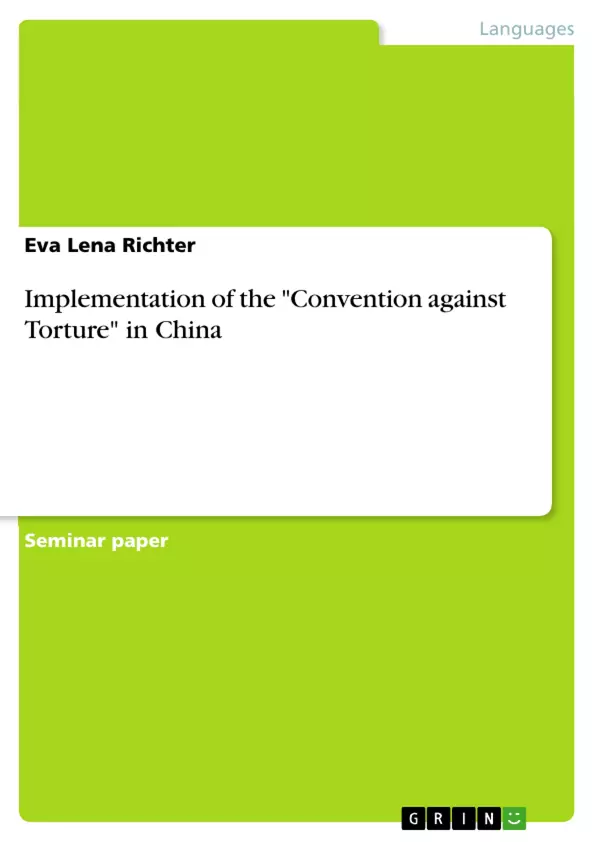Treaties such as the "Convention against Torture and Other Cruel, Inhuman or Degrading Treatment or Punishment (CAT)" constitute through their sheer scope of member countries the global human rights instruments of today. Although not binding for non-members, the basic ideas of the CAT are of high significance even to those countries. Since China's ratification of the CAT in 1988, the government has made efforts to combat the widespread practice of torture throughout the judicial system and executive organs.
This paper is outlining how the CAT has been implemented into Chinese laws and describes certain problems the implementation is facing.
The paper consists of three chapters and a summary. First, the CAT is described. After defining torture and looking at the reservations and obligations of China upon ratification, an examination of China's legal framework is to follow in chapter three. In chapter four, problems and criticism concerning China's implementation are described. In the summary, the findings are recapitulated.
Inhaltsverzeichnis (Table of Contents)
- Introduction
- Convention against Torture
- Definition of torture
- Reservations and obligations of China
- China's legal framework
- Implementation and related documents
- Exclusionary rule
- The two evidence rules
- The CPL revision in 2012
- Exclusion procedure
- Major points of criticism
Zielsetzung und Themenschwerpunkte (Objectives and Key Themes)
This paper examines the implementation of the Convention against Torture (CAT) in China. It aims to provide an overview of the CAT's provisions, analyze China's legal framework in relation to the Convention, and highlight key challenges and criticisms surrounding its implementation.
- The definition of torture according to the CAT
- China's reservations and obligations under the CAT
- The impact of the CAT on Chinese legal framework
- Challenges and criticisms related to the implementation of the CAT in China
- The role of the exclusionary rule in combatting torture in China
Zusammenfassung der Kapitel (Chapter Summaries)
Chapter 1 introduces the Convention against Torture (CAT) as a cornerstone of international human rights law and highlights its significance for both member and non-member states. The chapter discusses China's ratification of the CAT in 1988 and its subsequent efforts to combat torture.
Chapter 2 delves into the definition of torture as outlined in the CAT. It analyzes the four key factors that define torture, including severity, intention, purpose, and state involvement. The chapter explores the concept of inhumane or cruel treatment and the prohibition against justifying torture under any circumstances. It also discusses provisions related to the vulnerability of individuals in detention and the obligation to investigate torture allegations.
Chapter 3 focuses on China's legal framework in relation to the CAT. It examines the implementation of the CAT's provisions into Chinese law and explores the evolution of Chinese law concerning torture. The chapter provides an overview of the exclusionary rule, which aims to prevent the use of illegally obtained evidence in criminal cases. It highlights the role of the two evidence rules, the CPL revision in 2012, and the exclusion procedure in addressing the issue of torture.
Schlüsselwörter (Keywords)
Convention against Torture, China, human rights, torture, legal framework, implementation, exclusionary rule, evidence, criminal procedure, criticism, challenges, international law.
- Arbeit zitieren
- Eva Lena Richter (Autor:in), 2015, Implementation of the "Convention against Torture" in China, München, GRIN Verlag, https://www.grin.com/document/387951



